This 1971 poster in an abandoned Tube station said we'd get cheap villas in the South of France if Britain joined the EU
We found a pro-EU poster from 1971 in an abandoned tube station in London.
It says, "Do you know how much you would save on buying a villa in the South of France if we join the Common Market?"
Britain joined the EU in 1973 and the first EU referendum confirmed the decision in 1975.
Did you get your cut-price villa in the South of France yet? Time is running out!
When Britain leaves the EU in 2019, the price of a holiday home on the Mediterranean coast may go up again, according to this tattered poster we found in the abandoned Aldwych tube station on The Strand in London.
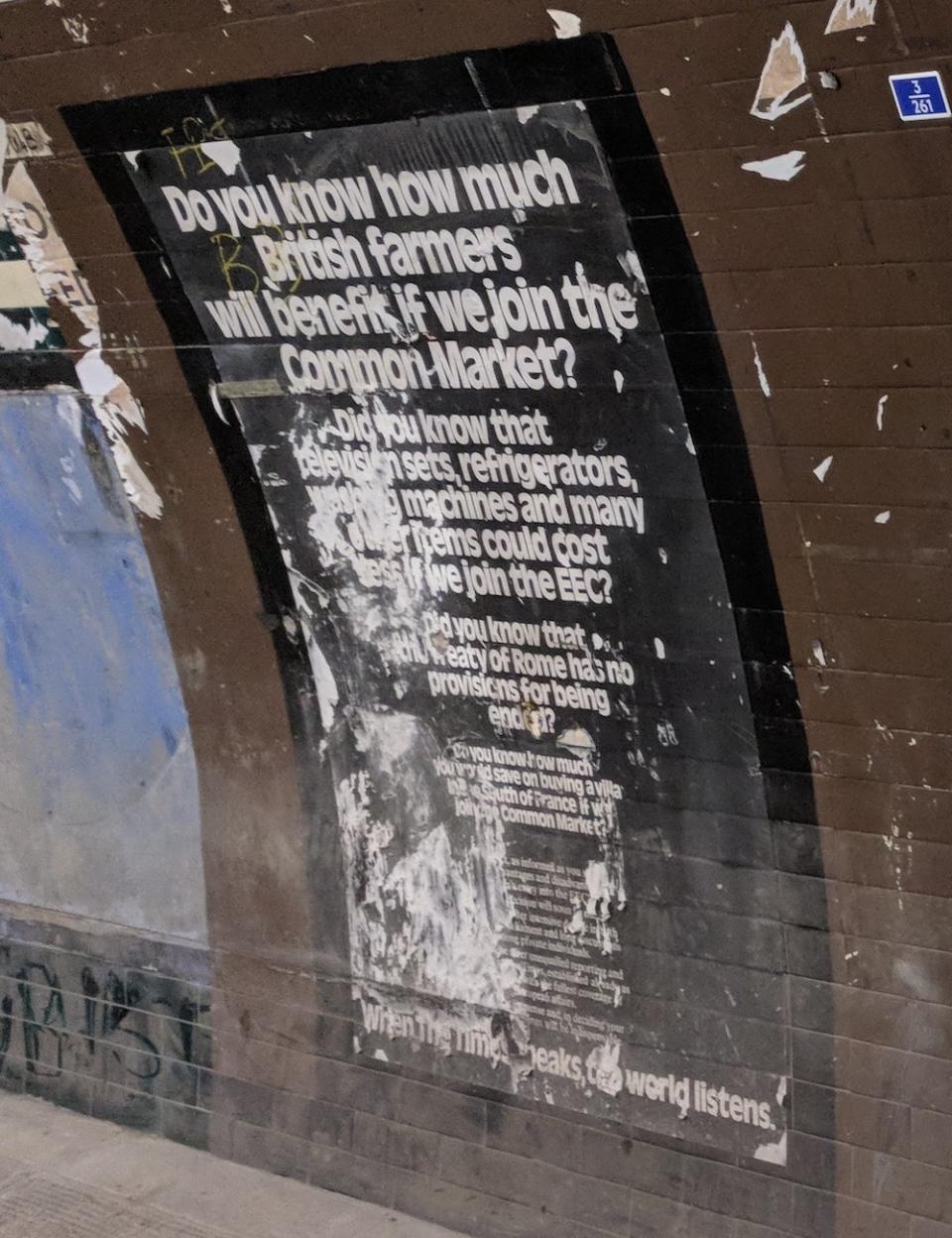
Jim Edwards / Business InsiderThe poster is an ad for The Times newspaper. It is undated but according to other old posters nearby, it was probably posted in 1971 or shortly afterward. At that time, prime minister Edward Heath's Conservative government was moving to join "the Common Market" as the EU and its Single Market was then known. Britain officially joined the European Union in 1973, and a referendum in which Britain voted "yes" to remain inside the EU confirmed the decision in 1975.
"Do you know how much you would save on buying a villa in the South of France if we join the Common Market?" the poster asks in a series of pro-Europe questions. The poster makes the EU sound like a wonderland of cheap houses, TVs and washing machines: "Did you know that television sets, refrigerators, washing machines and many other items could cost less if we join the EEC?" (The European Economic Community was a forerunner name for the EU.)
London is filled with dozens of abandoned Underground Stations, most of which were closed off over time as new tube lines were tunneled and older stations extended, until the original platforms became obsolete. Many of them are still accessible, and some are used as sidings for operational trains on other lines.
But one of the most famous old stations is Aldwych, on The Strand, which is maintained in fully functional (if dusty) condition by Transport for London as a location for TV, movie and fashion shoots. Whenever you see a film that involves a scene in the Tube, especially if the film takes place in the past, you're probably looking at the ghost station at Aldwych.
A crew from Business Insider visited some of TfL's abandoned tube stations recently to make a video.
To get there, you have to find the old Strand station, which now looks like this:
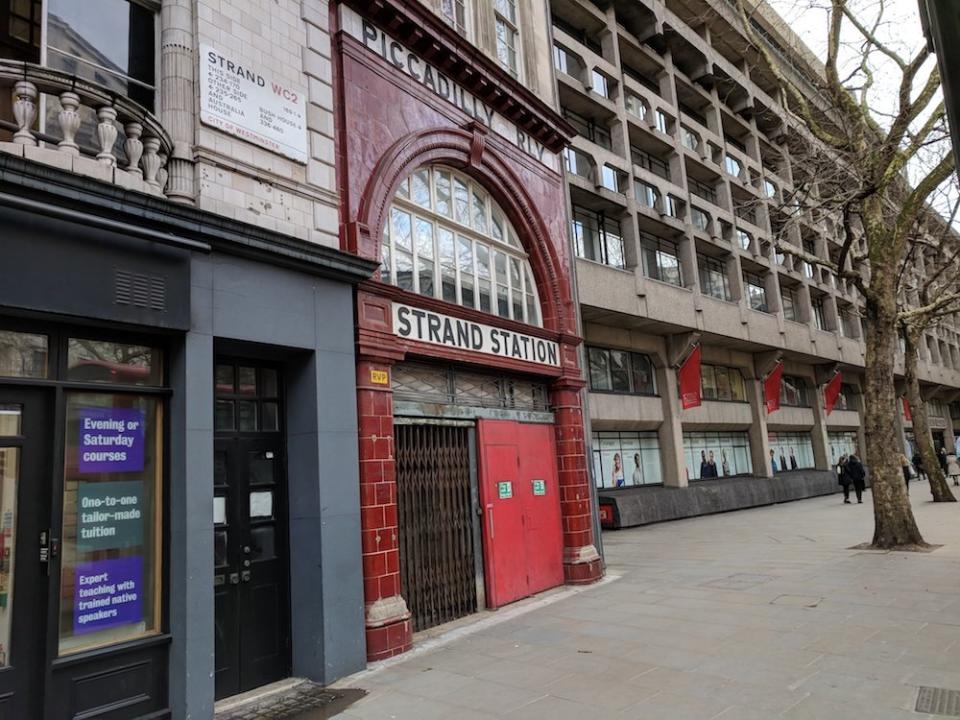
Jim Edwards / Business Insider
The Strand Station and Aldwych are the same station, it was renamed over the years. Staff from TfL's film unit let us in through the doors, which are permanently locked to the public.
The station was finally closed in 1994, when a weekly unlimited ticket cost £12 (about $15). Today, the same "Travelcard" ticket costs about £12 per day.
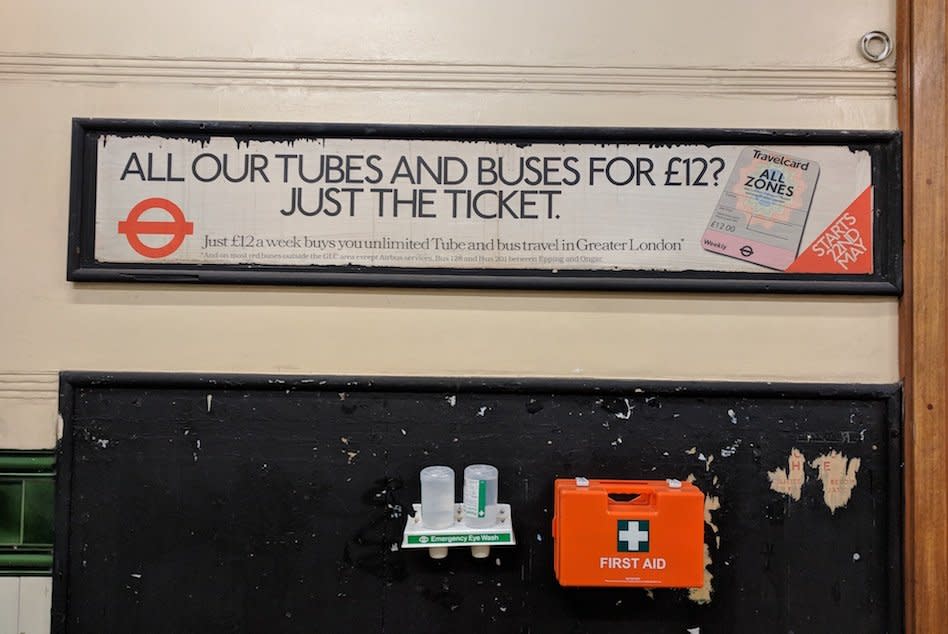
Jim Edwards / Business Insider
Go down the stairs ...

Jim Edwards / Business Insider
Through this old tunnel ...
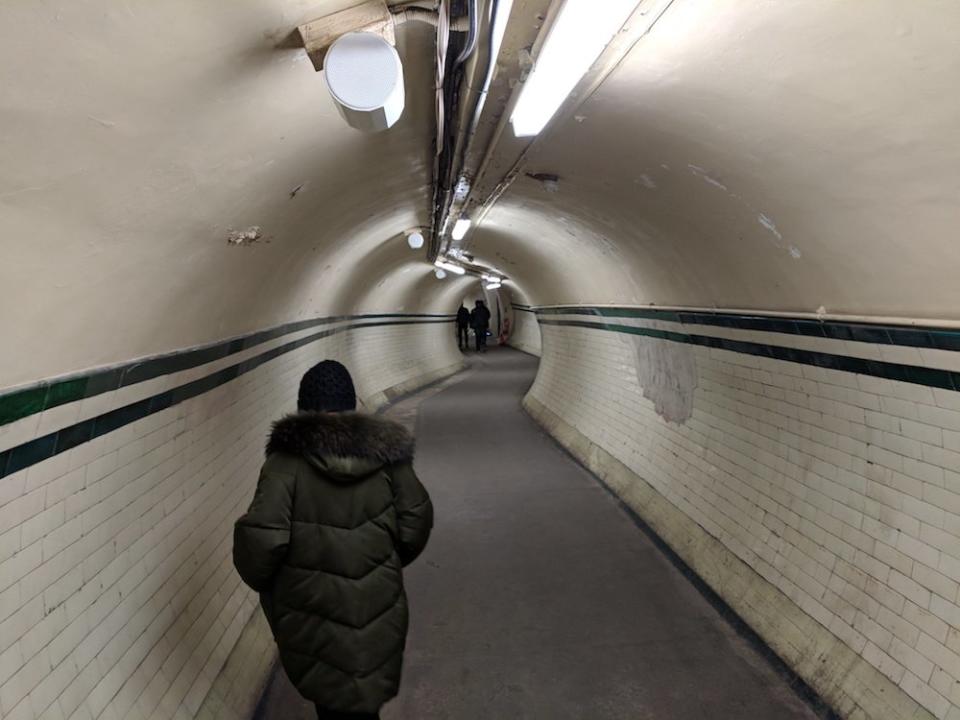
Jim Edwards / Business Insider
More stairs ...
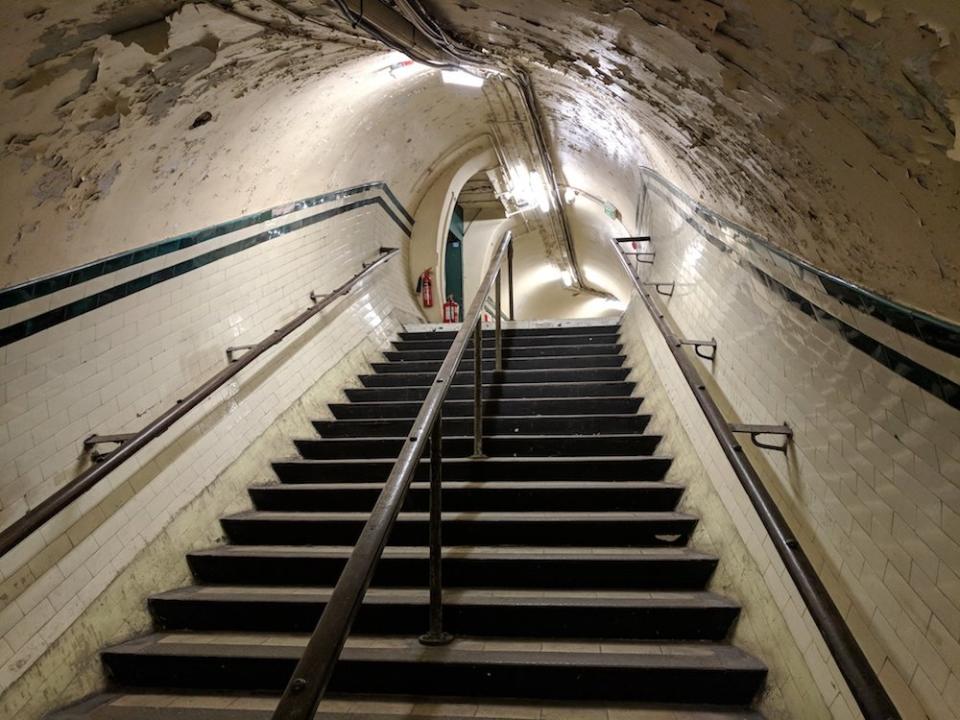
Jim Edwards / Business Insider
When you get to the platform, you're at the end of the line, an old branch of the Piccadilly Line.
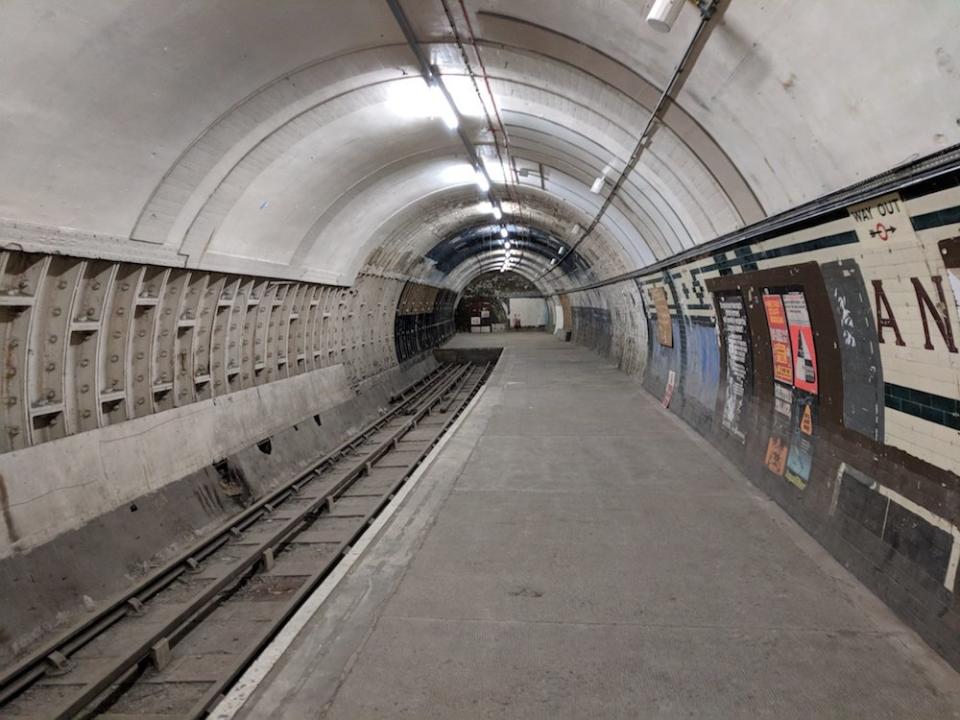
Jim Edwards / Business Insider
When you see the position of Aldwych on an old Tube map, you can see why the Piccadilly branch was closed. The line was a one-stop shuttle, and tended to be used only during the week by the theatre crowd. It takes about 5 minutes to walk between Aldwych and Holborn. By the time you have gone up and down between platform and street level in both stations, it's probably quicker to walk.
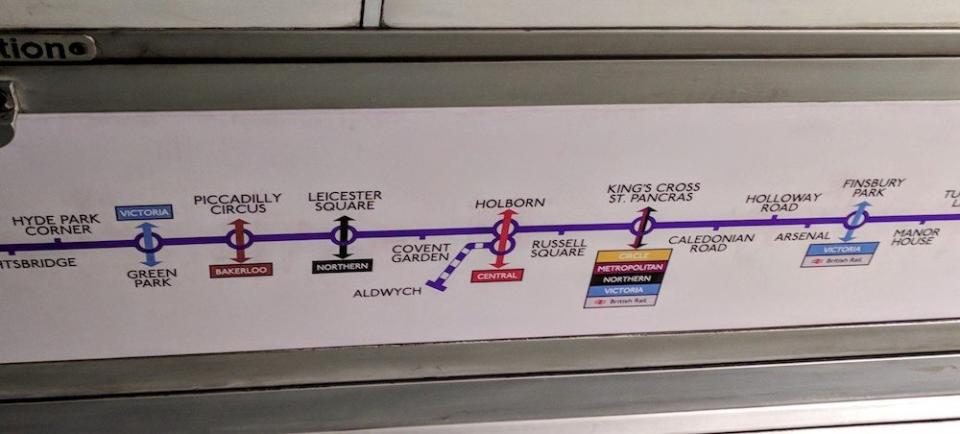
Jim Edwards / Business Insider
Anyway, there are plenty of old advertising posters on the walls from 40 years ago.

Jim Edwards / Business Insider
On one wall, you can find the pro-EU poster from the 1970s.

Jim Edwards / Business Insider
The situation with the farmers was a big deal back then.

Jim Edwards / Business Insider
The Times' ad campaign used the slogan "When The Times speaks, the world listens," and the gist of this poster was to test your ignorance of what Britain's entry into Europe would mean. Pro-Europe people were hoping it would make buying a house in France a lot cheaper, apparently:

Jim Edwards / Business Insider
That's not quite how it worked out. As this chart of historic exchange rates between the pound and the old French franc show, the franc immediately strengthened against the pound after 1975. That made French villas about 20% more expensive by 1976. However, the franc then weakened, and by the mid-1980s that villa would have been 20% cheaper. The franc ended up pretty much where it started by the time it was supplanted by the euro in the early 2000s.

Bank of England
NOW WATCH: A Georgetown professor explains how Martin Luther King Jr. 'has been severely whitewashed'
See Also:

 Yahoo News
Yahoo News 

